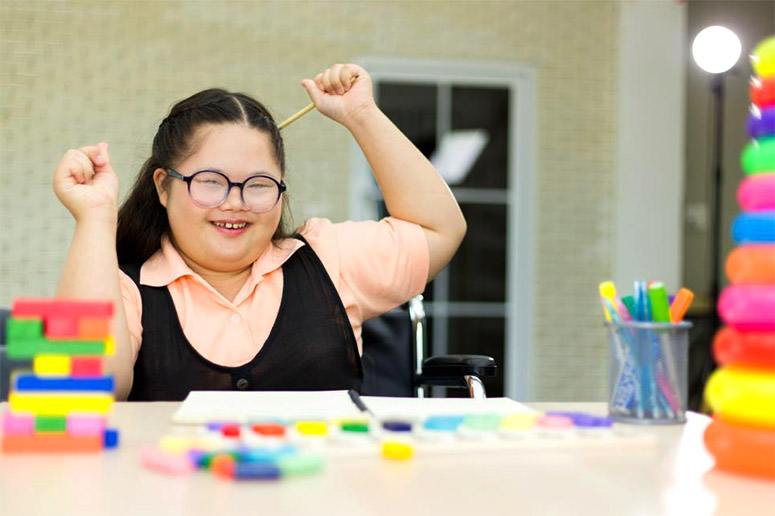Contents
What are the odds of having an autistic child? Autism is a complex developmental disorder that affects communication, behavior, and social interaction.
As awareness increases, many people seek to understand its various types, causes, and potential risk factors.
This article explores the genetic and environmental influences on autism, the likelihood of having an autistic child, and whether prevention is possible.
It discusses diagnosis, treatment options, and the outlook for children with autism, providing insights for families and caregivers navigating this journey.
What is autism?
Autism is a complex neurodevelopmental disorder that manifests through a diverse range of symptoms, typically affecting social skills, communication, and behavior.
Officially recognized as part of the autism spectrum disorder (ASD), its prevalence has increased significantly in recent years, leading to a greater emphasis on understanding its characteristics and underlying causes.
As researchers delve into autism statistics, they uncover various risk factors, including genetic and environmental influences, that contribute to the development of autism in children.
What are the different types of autism?
The term ‘autism spectrum’ encompasses a variety of conditions, including classic autism, Asperger’s syndrome, and Pervasive Developmental Disorder-Not Otherwise Specified (PDD-NOS), each varying in severity and symptoms.
Understanding the different types of autism is crucial for accurate diagnosis and tailored intervention strategies, as each type presents unique characteristics and challenges that influence childhood development and social integration.
For instance, classic autism often features significant communication deficits and a reliance on repetitive behaviors, while individuals with Asperger’s syndrome may exhibit high-functioning traits alongside difficulties in social cues.
PDD-NOS serves as a catch-all designation for those who do not fit neatly into the other categories but still experience notable challenges.
These nuances impact not only personal interactions but also necessitate diverse educational resources and support networks tailored to each individual’s needs.
Schools and caregivers play a pivotal role in providing effective strategies and fostering inclusive environments that acknowledge these varied manifestations of autism.
What are the causes of autism?

The causes of autism remain a topic of extensive research, with a growing body of evidence suggesting that both genetic and environmental factors play significant roles.
Genetic factors such as family history and parental age at conception have been identified as key risk factors, while environmental influences, including prenatal exposure to toxins and maternal health, are also under investigation.
Understanding these causes is critical for developing effective strategies for autism risk assessment and intervention.
Is there a genetic component to autism?
Research indicates that there is a significant genetic component to autism, with familial patterns suggesting the influence of inherited traits on the likelihood of an autistic diagnosis.
Studies show that siblings of autistic children have a higher probability of being diagnosed themselves, highlighting the importance of family history in autism genetics and risk assessment models.
This leads us to the question – What are the odds of having an autistic child if there is a family history of autism?
Longitudinal studies have reinforced these findings, revealing how specific genetic markers and familial connections can predict not just the presence of autism, but also its varying degrees of severity and associated traits over time.
This extensive research enables genetic counseling to provide tailored advice to families, helping them better understand the risks and implications of genetic inheritance.
Parents navigating the complexities of raising a child with autism can benefit from insights on how genetics influences behavior and development, thus equipping them to adopt effective strategies that support emotional well-being.
Understanding these genetic factors can facilitate discussions around potential interventions and support systems, ultimately nourishing a healthier family dynamic.
Are there environmental factors that contribute to autism?
Environmental factors are increasingly recognized as contributing elements to autism, with studies identifying prenatal exposure to various toxins and adverse maternal health conditions as potential risks.
These environmental influences may interact with genetic predispositions, further complicating the landscape of autism causation and emphasizing the need for a holistic understanding of autism spectrum disorders.
In particular, researchers have pointed to pollutants such as heavy metals and industrial chemicals, which are often present in urban areas, as critical environmental components that may heighten the risk of developing autism.
Nutrition during pregnancy plays a crucial role – inadequate intake of essential nutrients, like folic acid, has been linked to neurodevelopmental issues.
Healthcare access can impact the prenatal care that mothers receive, influencing both their physical health and that of their unborn children.
Understanding these environmental factors helps answer what are the odds of having an autistic child in certain conditions, as these factors may interact with genetic predispositions.
What are the odds of having an autistic child?
The odds of having an autistic child vary significantly based on several factors, including family history and the age of the parents at the time of conception.
Current autism statistics indicate that the prevalence of autism has risen sharply in recent years, leading to increased awareness and research into the underlying causes and risk factors associated with this neurodevelopmental disorder.
Is there a higher chance of having an autistic child if someone in the family has autism?
Families with a history of autism face a significantly higher chance of having another autistic child, underscoring the genetic component of this disorder.
Autism statistics reveal that the prevalence rates among siblings of autistic children are notably elevated, indicating a strong familial link that warrants attention in autism risk assessments.
Research indicates that approximately 20-25% of siblings of autistic children are likely to be diagnosed with autism themselves, a stark contrast to the general population where the prevalence is about 1 in 54.
This heightened likelihood emphasizes the importance of early screening and intervention for siblings, as they may face unique challenges navigating their relationships.
The dynamics within these families can also shift, as the presence of autism may foster deeper bonds among siblings while simultaneously necessitating tailored family support strategies to foster understanding and cooperative care.
Fostering a positive home environment becomes crucial, not only for the autistic child but also for their siblings who may need support in dealing with their unique circumstances.
Are there any other factors that can increase the odds of having an autistic child?
Beyond family history, various risk factors can also influence the odds of having an autistic child, including advanced parental age and certain environmental factors encountered during pregnancy.
Awareness of these interconnected factors can help answer what are the odds of having an autistic child under different conditions, highlighting the importance of comprehensive autism risk assessments.
These elements are crucial to consider in comprehensive autism risk assessments, as they provide insight into potential interventions and support networks that can assist affected families.
Maternal health during pregnancy plays a pivotal role, with conditions such as diabetes or obesity possibly elevating risk levels.
Socioeconomic status can also impact a child’s developmental outcomes, as families with limited resources may encounter barriers to accessing proper prenatal care and early intervention services.
Awareness of these interconnected factors is essential, as it can drive community resources to prioritize support initiatives and autism advocacy efforts.
By fostering better access to healthcare and education, communities can significantly improve outcomes for children on the spectrum, ensuring that families receive the necessary guidance and assistance throughout their journey.
Can autism be prevented?

While there is no definitive way to prevent autism, understanding the associated risk factors can help prospective parents make informed choices during pregnancy to potentially reduce the odds.
By focusing on maternal health and minimizing exposure to harmful environmental factors, parents may take proactive steps towards enhancing childhood development and mitigating some risks linked to autism. But what are the odds of having an autistic child?
Are there any steps that can be taken to decrease the odds of having an autistic child?
Several steps can be taken to potentially decrease the odds of having an autistic child, particularly through proactive prenatal care and improved maternal health practices.
Pregnant individuals can focus on nutrition, minimize exposure to environmental toxins, and ensure regular healthcare access to support healthy childhood development.
Plus maintaining a balanced diet rich in essential vitamins and minerals—such as folic acid, omega-3 fatty acids, and iron—future parents are encouraged to engage in regular physical activity and manage stress through mindfulness techniques.
Limiting exposure to harmful chemicals like pesticides and heavy metals in both food and living environments is also crucial.
Community resources, such as maternal support groups and public health workshops, can provide valuable information and encouragement, enabling families to connect with services that focus on mental wellness and child development.
Seeking guidance from healthcare professionals about vaccinations and prenatal screenings can further enhance preparedness, reinforcing the holistic approach to nurturing both maternal and child health. Understanding what are the odds of having an autistic child helps in making these informed decisions.
How is autism diagnosed?
Diagnosing autism is a multifaceted process that involves a thorough evaluation of an individual’s behavior, development, and medical history. Healthcare professionals look for early signs of autism spectrum disorder (ASD) such as difficulties with communication, challenges in social interactions, and repetitive behaviors.
This process typically includes comprehensive assessments by specialists such as pediatricians, psychologists, or developmental-behavioral pediatricians.
The DSM-5 (Diagnostic and Statistical Manual of Mental Disorders, Fifth Edition) offers a detailed set of criteria for diagnosing autism. This manual outlines specific behavioral patterns and developmental delays that professionals use to ensure an accurate diagnosis.
These criteria focus on two main areas: persistent deficits in social communication and interaction, and restricted, repetitive patterns of behavior or interests.
In addition to observing behavioral symptoms, clinicians often use various diagnostic tools and questionnaires, conduct developmental screenings, and sometimes involve parent interviews to gather a complete picture of the child’s developmental trajectory.
This detailed evaluation helps to differentiate autism from other developmental disorders and ensures a precise diagnosis.
What are the treatment options for autism?
Treatment options for autism are diverse and can be tailored to the individual needs of each autistic child, emphasizing the importance of early intervention and personalized approaches.
Various therapies, including behavioral therapy and educational resources such as individualized education plans (IEPs), play crucial roles in supporting autism development and enhancing social skills and communication.
What therapies are available for children with autism?
A variety of therapies are available for children with autism, with behavioral therapy being one of the most widely utilized intervention strategies designed to address social skills and communication challenges.
These therapies aim to support autism development, particularly in areas affected by sensory processing issues and behavioral challenges.
Among these approaches, occupational therapy plays a crucial role in helping children navigate daily tasks and improving fine motor skills, which can significantly enhance self-esteem and independence.
Speech therapy is equally important, as it focuses on developing effective communication techniques, allowing children to express their thoughts and emotions more clearly.
Social skills training provides structured opportunities for children to practice interactions with peers, fostering essential relationships that contribute to their emotional health.
Together, these therapies promote not only cognitive development but also emotional resilience, equipping children with autism to thrive in various environments.
Are there any medications that can help with autism?
While there are no medications specifically designed to treat autism, certain medications can help alleviate associated symptoms such as anxiety, depression, and behavioral challenges.
These medications can be part of a comprehensive autism treatment plan that also includes behavioral interventions and support for mental health.
In this context, families often find that pharmacological options can complement therapies aimed at enhancing social skills and communication.
By tackling issues like irritability or focus, these medications may provide children with a better foundation for engaging in therapeutic activities.
It is essential to recognize that the effectiveness and necessity of medication can vary significantly from one individual to another.
Thus, a tailored approach that synergizes medication, therapy, and lifestyle adjustments is crucial for improving the overall outlook and quality of life for those with autism. Knowing what are the odds of having an autistic child can help in planning and managing these aspects effectively.
What is the outlook for children with autism?

The outlook for children with autism can vary greatly depending on individual factors and the quality of the support systems available to them.
Early intervention is crucial and can make a significant difference in developmental outcomes. Access to specialized educational resources, tailored therapies, and a supportive environment also play essential roles in shaping a child’s future.
Autism statistics highlight that with appropriate support, many children with autism can make notable progress in social development, communication, and academic success.
Early and consistent interventions often lead to improvements in these areas, allowing children to achieve important developmental milestones and navigate social interactions and learning environments more effectively.
In addition to these factors, understanding what are the odds of having an autistic child can provide valuable context for families and caregivers. The prevalence of autism spectrum disorder (ASD) is rising, with recent statistics indicating that approximately 1 in 36 children are diagnosed with autism.
This statistic underscores the importance of awareness and early intervention.
The presence of a robust support network – including family, educators, and healthcare professionals – further enhances a child’s developmental trajectory. Individual characteristics, such as the severity of autism and any co-occurring conditions, also influence outcomes.
As such, each child’s journey is unique, and while the outlook can be diverse, many children with autism, with the right strategies and support, can achieve meaningful progress and lead fulfilling lives.
You can read our FAQ of what are the odds of having an autistic child a little bit down on the page.



